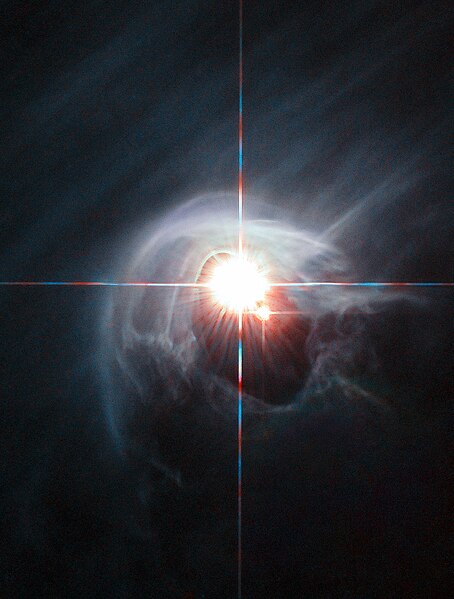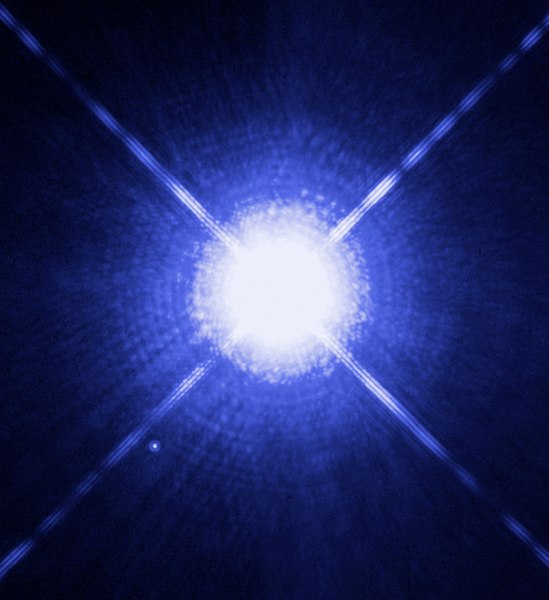Epsilon Aurigae is a multiple star system in the northern constellation of Auriga, the charioteer. It is an unusual eclipsing binary system comprising an F0 supergiant and a companion which is generally accepted to be a huge dark disk orbiting an unknown object, possibly a binary system of two small B-type stars. The distance to the system is still a subject of debate, but data from the Gaia spacecraft puts its distance at around 1,350±300 light years from Earth.
Bright class F star and companion Class B star surrounded by a dusty disk (artist impression)
A star system or stellar system is a small number of stars that orbit each other, bound by gravitational attraction. A large group of stars bound by gravitation is generally called a star cluster or galaxy, although, broadly speaking, they are also star systems. Star systems are not to be confused with planetary systems, which include planets and similar bodies.
The Algol three-star system imaged in the near-infrared by the CHARA interferometer with 0.5 mas resolution in 2009. The shape of Algol C is an artifact.[citation needed]
Artist's impression of the orbits of HD 188753, a triple star system.
Star system named DI Cha. While only two stars are apparent, it is actually a quadruple system containing two sets of binary stars.
Sirius A (center), with its white dwarf companion, Sirius B (lower left) taken by the Hubble Space Telescope.





